Health
'Brother Let's Talk' to Host Men's Mental Health Awareness Program on June 17
Brother Let’s Talk a Birmingham-based grassroots mental health initiative will hold an open conversation about Black men’s well-being. (Adobe Stock) By Don Rhodes II | The Birmingham Times In recognition of Men’s Mental Health Awareness Month, Brother Let’s Talk a Birmingham-based grassroots mental health initiative will unite professionals, community leaders, Divine Nine fraternity members, and […]
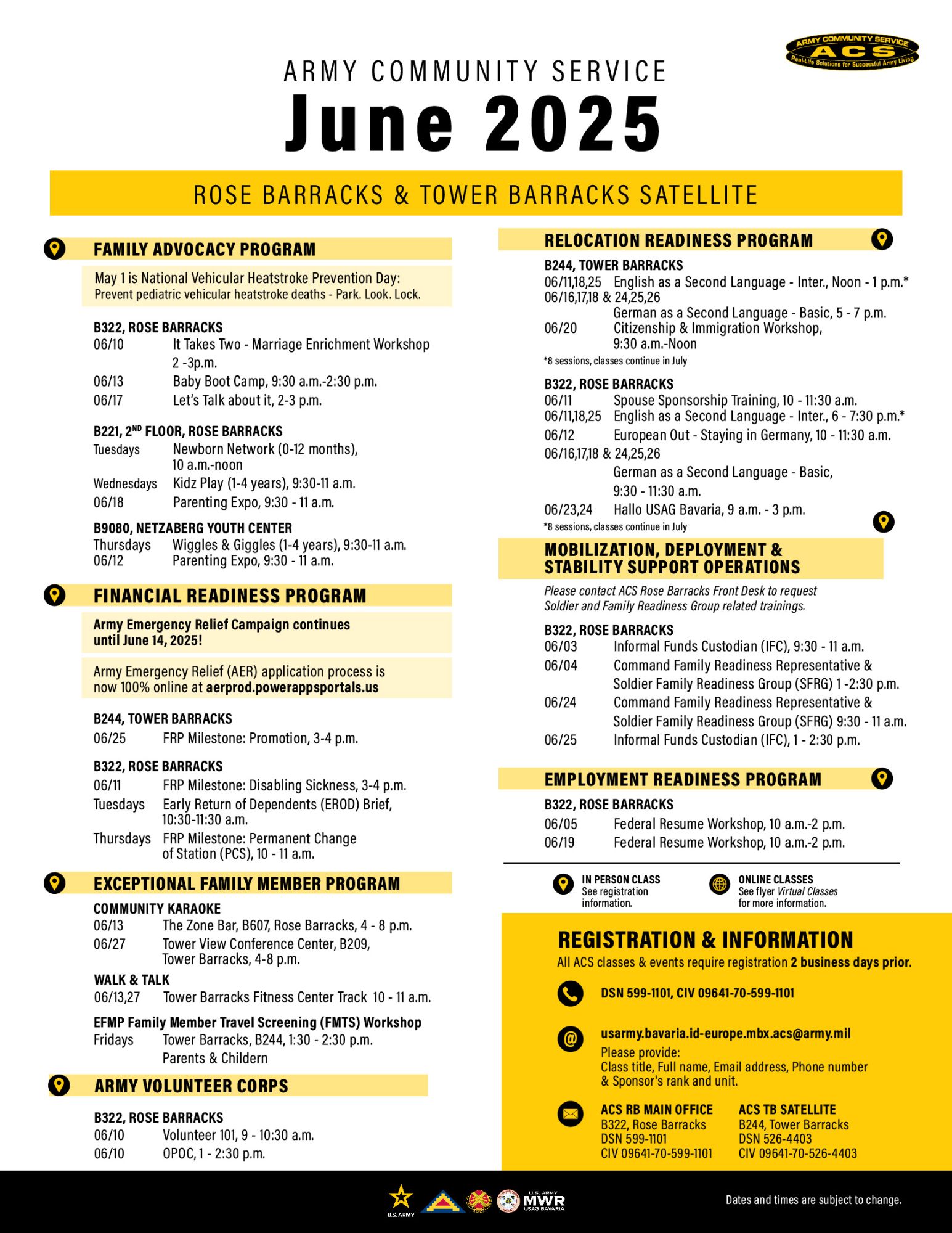


By Don Rhodes II | The Birmingham Times
In recognition of Men’s Mental Health Awareness Month, Brother Let’s Talk a Birmingham-based grassroots mental health initiative will unite professionals, community leaders, Divine Nine fraternity members, and residents on June 17 for an open conversation about Black men’s well-being, a movement that began nearly seven years ago.
A reception will be held at 5:30 p.m. and the main program begins at 7 p.m.
“We are hosting this event specifically in the month of June to increase awareness about the importance of men’s mental health,” said Jacques Austin, co-founder of Brother Let’s Talk. “This is another opportunity to highlight the importance, to continue the conversation, and to provide the community with awareness and resources.”
Organizers say the program is designed to help men engage in open conversations about healing from past traumas, emotional struggles and challenges they face in today’s world.
This year’s keynote speaker is Dr. Jay Barnett a former professional athlete, author, and licensed therapist known for his work Just Heal Bro, a mental health journal for men.
“Dr. Barnett is a perfect fit,” said Austin. “He’s a Black male therapist — something we don’t see often and he speaks from the perspective of a former athlete and a current counselor. His work helps men open up through journaling, which is a powerful therapeutic tool.”
Hosting this month’s event at the Birmingham Museum of Art was a deliberate choice to elevate the setting and bring mental health discussions into spaces of beauty and heritage, said Austin.
“We try to find locations that are spacious and highlight part of the beauty of Birmingham,” he said. “The museum represents history, culture, and is a great place for people to gather and have meaningful conversations.”
What began in 2017 as a one-time panel discussion among seven Black male mental health professionals has grown into a transformative movement. Yvas Witherspoon, assistant director and co-founder of Brother Let’s Talk, remembers its origin clearly:
“Seven of us working in mental health came together back in 2017, and all of us saw a need to reach out to Black men in a culturally relevant way,” Witherspoon said. “We saw firsthand how stigma and lack of culturally competent care were impacting our community.”
</p>
<p>” data-medium-file=”https://www.birminghamtimes.com/wp-content/uploads/2025/06/BrotherTalk-11-300×227.jpg” data-large-file=”https://www.birminghamtimes.com/wp-content/uploads/2025/06/BrotherTalk-11.jpg” class=”size-full wp-image-129724″ src=”https://www.birminghamtimes.com/wp-content/uploads/2025/06/BrotherTalk-11.jpg” alt width=”768″ height=”582″ srcset=”https://www.birminghamtimes.com/wp-content/uploads/2025/06/BrotherTalk-11.jpg 768w, https://www.birminghamtimes.com/wp-content/uploads/2025/06/BrotherTalk-11-300×227.jpg 300w, https://www.birminghamtimes.com/wp-content/uploads/2025/06/BrotherTalk-11-554×420.jpg 554w, https://www.birminghamtimes.com/wp-content/uploads/2025/06/BrotherTalk-11-80×60.jpg 80w, https://www.birminghamtimes.com/wp-content/uploads/2025/06/BrotherTalk-11-100×75.jpg 100w, https://www.birminghamtimes.com/wp-content/uploads/2025/06/BrotherTalk-11-180×135.jpg 180w, https://www.birminghamtimes.com/wp-content/uploads/2025/06/BrotherTalk-11-640×485.jpg 640w, https://www.birminghamtimes.com/wp-content/uploads/2025/06/BrotherTalk-11-681×516.jpg 681w” sizes=”(max-width: 768px) 100vw, 768px”><figcaption id=) Jacques Austin, co-founder of Brother Let’s Talk: “This is another opportunity to highlight the importance, to continue the conversation, and to provide the community with awareness and resources.” (File)
Jacques Austin, co-founder of Brother Let’s Talk: “This is another opportunity to highlight the importance, to continue the conversation, and to provide the community with awareness and resources.” (File)Austin echoed that sentiment, adding: “We came together with the idea of having just one event. Our motto is to ‘stop the stigma and address the stress.’ We wanted to identify and dispel that stigma that Black men have regarding mental health.”
The first event drew over 100 attendees. “They were saying, ‘This was great. When can y’all do this again?’ That’s when our wheels started turning,” Austin said.
Since its inception, Brother Let’s Talk has evolved into more than just a one-time event. It now hosts Barbershop Talks — monthly men-only gatherings where participants discuss topics such as depression, anxiety, relationships, and grief in a judgment-free zone.
“The barbershop talks are held on the last Sunday of each month and focus on real-life issues,” said Austin. “We bring in licensed professionals, but we keep the space relaxed and familiar. The barbershop is a sacred space in Black culture.”
Witherspoon emphasized how important these casual spaces are for healing. “Barbershops, community centers, museums — these aren’t traditional therapy offices, but they are where Black men feel safe and seen,” he said.
For the first time members of the Divine Nine fraternities — Alpha Phi Alpha, Kappa Alpha Psi, Omega Psi Phi, Phi Beta Sigma, and Iota Phi Theta — historically Black Greek-letter organizations — will partner with Brothers Let’s Talk to strengthen the message and increase reach.
“We hadn’t done a community event specifically with the Divine Nine before,” Austin shared. “I’m a member of Omega Psi Phi Fraternity, Inc., and we have an initiative called Brother, You’re on My Mind, which also promotes mental health awareness.”
“This was a chance to bring the Divine Nine men together to talk about mental health awareness,” he continued. “Many of them are therapists, counselors, or simply passionate about mental wellness. It was the perfect collaboration.”
For both Austin and Witherspoon, the mission is personal.
“Some men come and just absorb the conversation. Others are eager to talk,” Austin said. “We’ve developed a small group of consistent attendees, and we hope that continues to grow.”
Witherspoon added: “If we can reach one man, that one man can impact a family. That family can impact a community. That’s how change happens — one man at a time.”
For more information, please visit www.brotherletstalk.com
Health
Tristan Thompson Named Chief Advisory Officer for DeSci Platform AxonDAO
Tristan Thompson has been keeping himself busy, as he continues to make waves in the Web3 space. Months after launching TracyAI, the Cleveland Cavaliers center was announced as the Chief Advisory Officer for AxonDAO, a decentralized science (DeSci) platform that aims to revolutionize healthcare through AI and blockchain technology. AxonDAO’s operating company, AXDT Inc., announced Thompson’s appointment in a press release […]
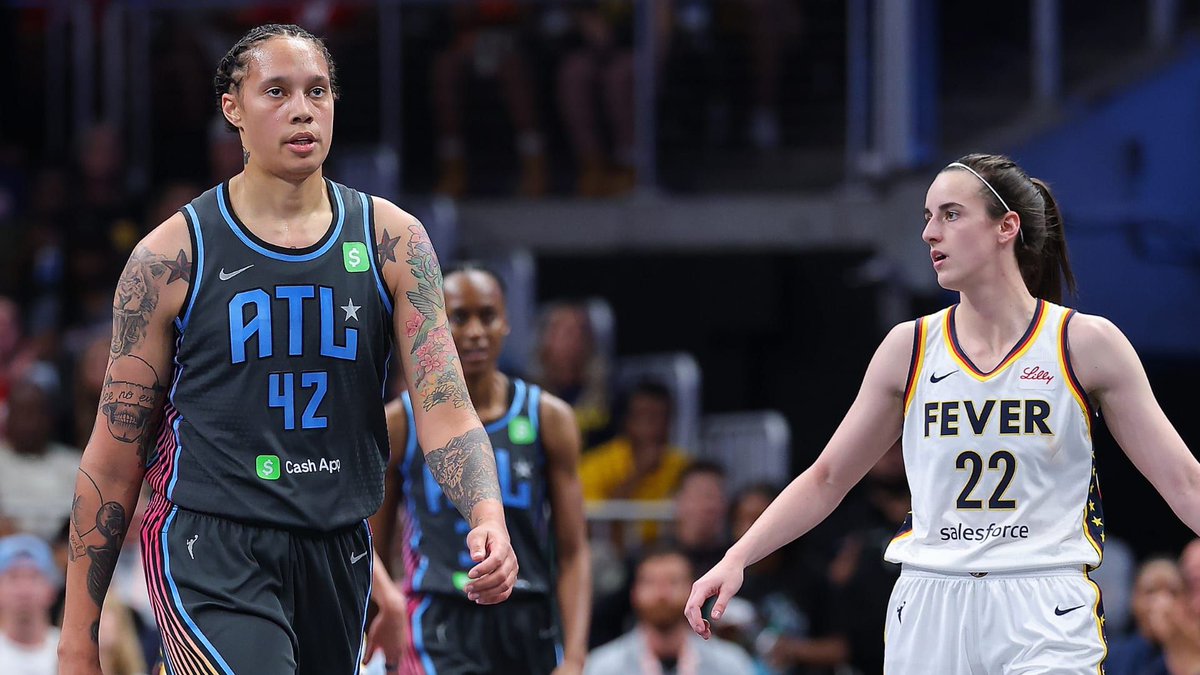
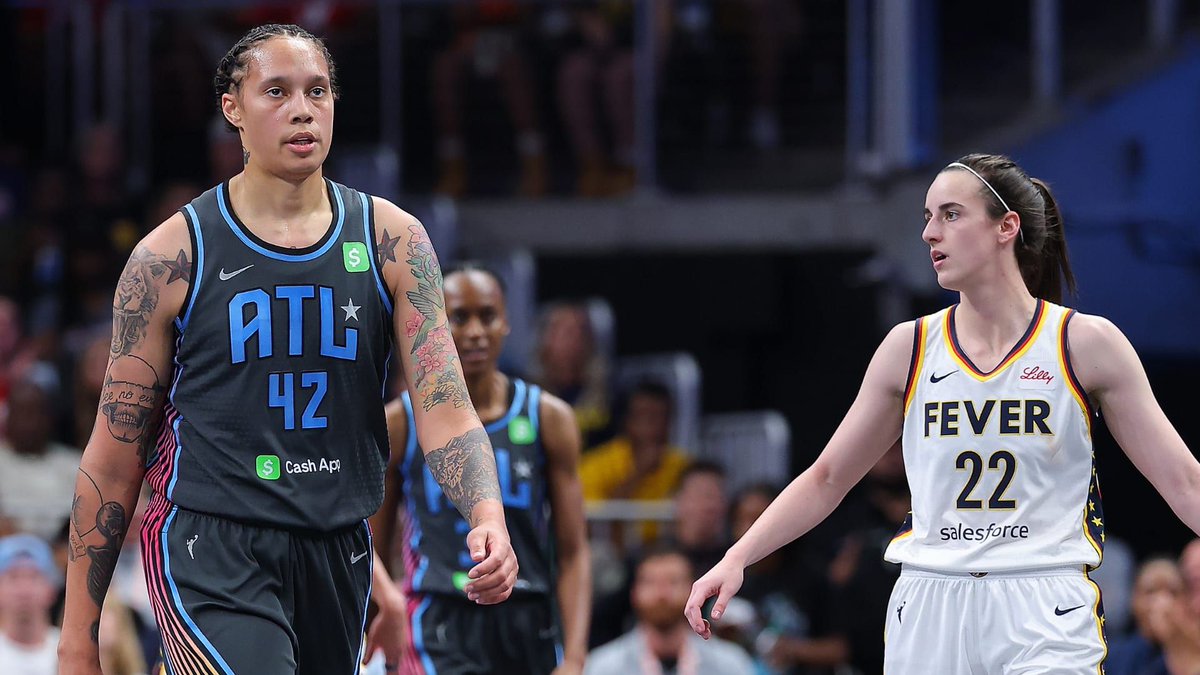

Tristan Thompson has been keeping himself busy, as he continues to make waves in the Web3 space.
Months after launching TracyAI, the Cleveland Cavaliers center was announced as the Chief Advisory Officer for AxonDAO, a decentralized science (DeSci) platform that aims to revolutionize healthcare through AI and blockchain technology.
AxonDAO’s operating company, AXDT Inc., announced Thompson’s appointment in a press release on Thursday (June 19), stating that Thompson was drawn to the company’s mission to “return control of health data to individuals; reward ethical research participation through blockchain-powered incentives; and accelerate innovation in wellness domains such as nutrition, recovery, cannabis and psychedelics, and music-based therapy.”
“Health is wealth. I believe in giving people ownership over their wellness journey, and AxonDAO is building the future of health, data and science in a way that includes everyone,” Thompson said in a statement.
As the Chief Advisory Officer, Thompson will help AxonDAO expand into athlete-specific health markets, helping craft campaigns and marketing strategies that focus on recovery, sleep, nutrition and mental health. He will also lead outreach to other high-profile figures, including his fellow professional athletes.
“Athletes understand the importance of recovery, focus, and self-awareness,” he said. “What we’re building with AxonDAO doesn’t just benefit professionals – it helps people live better, longer, and stronger lives.”
Health
Alessia Russo explains why she's ditched social media
Russo reflects on the mental toll of online abuse as she prepares for Euros campaign Photo by Justin Setterfield/Getty Images Alessia Russo has revealed she no longer uses social media during major tournaments after admitting she was previously “sucked into” reading abusive comments that affected her focus and wellbeing. Advertisement Advertisement Advertisement The Arsenal and […]


Russo reflects on the mental toll of online abuse as she prepares for Euros campaign

Photo by Justin Setterfield/Getty Images
Alessia Russo has revealed she no longer uses social media during major tournaments after admitting she was previously “sucked into” reading abusive comments that affected her focus and wellbeing.
Advertisement
The Arsenal and England striker, who is preparing for next month’s UEFA Women’s European Championship in Switzerland, spoke candidly about the psychological cost of exposure to online criticism, calling it “really damaging” and urging fellow athletes to protect themselves from it.
“I think every player might have a different story about that side of the game, but it’s definitely one that can be really damaging,” Russo said. “I have faced it in the past and I think most players here have. When I was younger I probably got sucked into it more. I read it more than I should have and listened to it more than I should have. The only opinions that matter are my team-mates, my coaches and my family.”
Russo continued: “I think you have to remember that they are the people you need to lean on in tough times. As I’ve got older, I understand more what works for me. In my first Euros I was on social media and I would have a look, have a scroll, and I got caught in a trap sometimes.

Photo by Catherine Steenkeste/Getty Images
“Going into the World Cup, I completely came off everything and I had people to run my Instagram. I just focused on the tournament. Staying away from it and staying focused as a team is what works for me.”
Advertisement
Her comments came a day after Katie Boulter, Britain’s top-ranked female tennis player, revealed she and her family had received death threats following tournament defeats. Russo said she could “empathise completely” with that experience, stressing the need for athletes to prioritise their mental health.
The 26-year-old heads into the summer in arguably the best form of her career, having played a decisive role in Arsenal’s UEFA Women’s Champions League triumph. She scored seven goals in 11 matches in the competition, alongside 12 goals in the Women’s Super League.
Health
Fox Soars To Second PacWest Scholar
Story Links IRVINE, Calif. – Add one more awesome honor to the resume of recent Concordia University Irvine alum Dylan Fox. The three-time All-American and three-time PacWest Champion in the long jump was named the PacWest Men’s Track & Field Scholar-Athlete of the Year for the second time in his incredible Concordia career. The Irvine, Calif. […]



IRVINE, Calif. – Add one more awesome honor to the resume of recent Concordia University Irvine alum Dylan Fox.
The three-time All-American and three-time PacWest Champion in the long jump was named the PacWest Men’s Track & Field Scholar-Athlete of the Year for the second time in his incredible Concordia career.
The Irvine, Calif. native sported a 3.91 GPA in business administration. He was also voted the Men’s Track & Field Scholar-Athlete of the Year by the PacWest sports communicators in 2023.
A graduate of nearby Irvine High School, Fox finished 11th, 10th, and then 8th in the long jump on the national stage at the NCAA DII Championships the past three years. He is Concordia’s first three-time All-American on the men’s track and field side in the NCAA DII era, capturing Second Team honors the past two seasons before capping it off with First Team All-American honors in May.
Fox was also honored last month as Concordia’s Male Athlete of the Year during the 2025 Senior Legacy Award Banquet.
Health
Sports that can help compel seniors to get up and move
Discussions about the benefits of sports participation are often rooted in how much young people can gain from playing a team sport. Older adults have much to gain from playing sports as well, and that’s something retirees can keep in mind as they look for activities to fill their time. A study published in the […]



Discussions about the benefits of sports participation are often rooted in how much young people can gain from playing a team sport. Older adults have much to gain from playing sports as well, and that’s something retirees can keep in mind as they look for activities to fill their time.
A study published in the journal Biochemistry Research International found that physical activity can be a protective factor for noncommunicable diseases, including heart disease and diabetes, and can even help to delay the onset of dementia. The study also linked physical activity to improved quality of life and mental health. Sports require players to be physically active, so seniors who decide to dust off their athletic gear and play the following sports can reap all the rewards that getting up and moving has to offer.
Golf: Golf provides a range of health benefits that committed players are well aware of. Seniors who play golf, particularly those who walk the course instead of using a cart to get around, can reap the rewards of walking, including improved cardiovascular health, and even the benefits of strength-training, as carrying a golf bag around nine or 18 holes can build strength that protects bones and reduces the risk of fractures. Traversing a course also helps to burn calories, which can help seniors maintain a healthy weight.
Pickleball: The popularity of pickleball has skyrocketed in recent years, with the Sports & Fitness Industry Association estimating there are now roughly nine million pickleball players in the United States. The organization Pickleball Canada reports that nearly 1.4 million Canadians played pickleball at least once per month in 2023, proving that this popular sport transcends borders and offers a great way to socialize with fellow seniors.
Walking: Accessibility is one of the major benefits of walking. Even seniors with limited mobility can look to walking as a less demanding physical activity that compels them to get out of the house. And the benefits of walking may be more profound than people realize. Preliminary research presented at an American Heart Association gathering in 2023 estimated that walking an additional 500 steps per day, which is equivalent to roughly a quarter of a mile, was associated with a 14 percent lower risk for heart disease, stroke or heart failure.
Softball: Baseball was the first love of many a sports fan over the years, and senior softball provides a way to maintain or even reignite that passion, all the while reaping the health benefits of sports play. Softball can help seniors maintain their hand-eye coordination and improve their flexibility. But perhaps the most notable benefit of playing senior softball involves socialization. Senior softball requires being on a team, and the benefits of socialization for seniors are numerous, particularly when they play in leagues featuring players from outside their immediate social circle. A study published in The Journals of Gerontology found that older adults who socialize with people outside their typical social circle were more likely to have higher levels of physical activity and a more positive mood. Such individuals also had fewer negative feelings.
Health
A Unified System for Student Athlete Supports
A growing number of programs in higher education focus on student athletes’ mental health, recognizing that the pressures of competing in collegiate athletics, combined with academic challenges, financial concerns and team relationships, can negatively impact student well-being. At the University of Richmond, the athletics department created a new program to emphasize holistic student well-being, taking […]


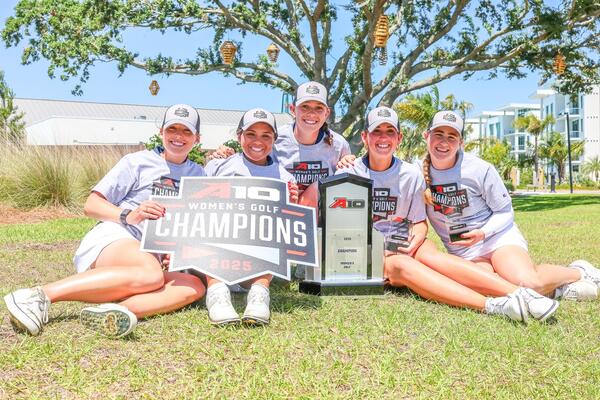
A growing number of programs in higher education focus on student athletes’ mental health, recognizing that the pressures of competing in collegiate athletics, combined with academic challenges, financial concerns and team relationships, can negatively impact student well-being.
At the University of Richmond, the athletics department created a new program to emphasize holistic student well-being, taking into account the different dimensions of a student athlete’s identity and development.
Spider Performance, named after the university mascot, unites various stakeholders on campus to provide a seamless experience for student athletes, ensuring they’re properly equipped to tackle challenges on the field, in the classroom and out in the world beyond college.
Most Popular
“The athlete identity is a really special part of [students’ identities], but it’s not the only part, so making sure they are [considered] human beings first—even before they’re students, they’re humans first. Let’s examine and explore that identity,” said Lauren Wicklund, senior associate athletics director for leadership and student-athlete development.
How it works: The university hosts 17 varsity sports in NCAA Division I, which include approximately 400 student athletes. Richmond has established four pillars of the student athlete experience: athletic, academic, personal and professional achievement.
“The whole concept is to build champions for life,” said Wicklund, who oversees the program. “It’s not just about winning in sport; it’s about winning in the classroom, winning personally and then getting the skills and tools to win for the rest of your life.”
These pillars have driven programming in the athletics department for years, but their messaging and implementation created confusion.
Now, under Spider Performance, the contributions and collaborations of stakeholders who support student athletes are more visible and defined, clarifying the assistance given to the athletes and demonstrating the program’s value to recruits. The offices in Spider Performance include academic support, sports medicine, leadership, strength and conditioning, mental health, and well-being.
“It’s building a team around them,” Wicklund explained. “Rather than our student athlete thinking, ‘I have to go eat here, I have to do my homework here, I have to do my workout here,’ it’s, ‘No, we want you to win at everything you do, and how you do one thing is how you do everything.’”
Outside of the specific athletic teams, Wicklund and her staff collaborate with other campus entities including faculty members, career services and co-curricular supports.
Preparing for launch: Richmond facilitates a four-year development model for student athletes, starting with an orientation experience for first-year students that helps them understand their strengths and temperament, up to more career-focused programming for seniors.
Recognizing how busy students’ schedules get during their athletic season, the university has also created other high-impact learning experiences that are more flexible and adaptive. Students can engage in a career trek to meet alumni across the country, study abroad for a short period, participate in a service project or take a wellness course, all designed to fit into their already-packed schedules.
Editors’ Picks
Part of the goal is to help each student feel confident discussing their experience as an athlete and how it contributes to their long-term goals. For instance, students might feel ill-equipped for a full-time job because they never had a 12-week internship, but university staff help them translate their experiences on the field or the court into skills applicable to a workplace environment, Wicklund said.
The university is also adapting financial literacy programming to include information on name, image and likeness rights for student athletes, covering not just budgeting, investing and financial literacy topics but also more specific information related to their teams.
Encouraging athletes to attend extra sessions can be a challenge, but the Spider Performance team aims to help students understand the value of the program and how it applies to their daily lives. The program also requires buy-in from other role models in students’ lives, including trainers, coaches and professors.
“We work really hard to customize fits to different programs so we’re speaking the same language as our coaches,” which helps create a unified message to students, Wicklund said.
If your student success program has a unique feature or twist, we’d like to know about it. Click here to submit.
Health
Beyond the Game
In the next and final part of the special report, she investigates the many approaches that the city’s local government can take to mitigate urban flooding for its residents, including green alleys. Basements filled with murky storm and sewer water, or back alleys riddled with standing water. These are some of the images that Berwyn’s […]


In the next and final part of the special report, she investigates the many approaches that the city’s local government can take to mitigate urban flooding for its residents, including green alleys.
Basements filled with murky storm and sewer water, or back alleys riddled with standing water. These are some of the images that Berwyn’s urban flooding problem evokes for residents who needto deal with it. What is local government doing to help residents protect their homes from rising waters? And how can residents take control to mitigate damage from excess runoff and sewer backups?
Mitigation efforts and setbacks
As made clear by the 2018 Stormwater Plan, there are many approaches Berwyn’s local government can take to mitigate urban flooding for its residents. One of the effective ones has been green alleys. As opposed to regular alleys, green alleys are built with sustainable materials, such as pervious pavements. Green alleys allow for better stormwater drainage, as standing water is more likely to sink into the permeable ground rather than drain into someone’s basement.
The left is a photo of a green alley located at the 3700 block of Cuyler after heavy rain. The right is a photo of a normal alley at the 3700 block of Lombard after the same rainfall. Credit: Joshua Bowman
While green alleys can improve standing water in Berwyn, and this is something local government is looking to continually implement, they’re expensive and time-consuming to construct.
“Berwyn has 655 alleys,” said Robert Schiller, Berwyn’s Director of Public Works. “Not all of them will qualify for a green alley.”
This is because a green alley can only be implemented somewhere with permeable soil that will allow for water absorption, and it’s up to Schiller and his team to test that. Soil testing isn’t the only hurdle to implementing more green alleys.
“The cost for a green alley is about $360,000, and that’s one 600-foot alley. So, yeah, it’s a very long and slow process going through and applying. You apply for a grant, you get maybe a million dollars or a million three or something to that effect. Then we have our match. So we might get four, maybe five alleys done,” said Schiller, “To have the funding to be able to go through and do all that you need to do would be great, but it’s unrealistic to expect to get, you know, $70, $80, $90 million, $100 million for a community of 57,000 to install green alleys.”
This doesn’t mean green alleys are a dead end; members of local government, such as Alderman-elect Joshua Bowman, are looking to find ways to overcome these challenges, and of course, the MWRD will still work in collaboration with Berwyn to provide funding for these types of projects.
“We consistently and are constantly applying for grant funding for various types of stormwater mitigation,” Schiller confirms.
In the meantime, local government has given agency to the individual homeowner to mitigate flooding in their homes with the Residential Flood Mitigation Shared Cost Program. This program provides a grant to homeowners who wish to install a flood control system – this can come in several forms, such as a backflow prevention device or check valve. The program is designed to reimburse the costs of installation with a city grant that covers up to $3,500.
However, these flood control systems are often much more expensive than a few thousand dollars to install.
“There’s a lot of concern from people that the overall cost is going to be so high that even with the offsetting grant that they can’t absorb the cost,” said South Berwyn resident Karin Nangreave.
Micah Caldwell, Berwyn resident and 1st Ward Alderman, said he spent around $15,000 to install an overhead sewer system, one of the options for homeowners who take advantage of the program.
However, now may be the best time to take advantage of the Shared Cost Program, as the American Rescue Plan has recently dedicated $500,000 to subsidize the program.
This means that, through the Shared Cost Program, a resident can receive an upfront grant of $4,000 to install a flood mitigation device.
“If it’s a backflow prevention device with a sump pump, electric discharge bypass pump, they would get $4,000 credit through the ARPA funds from the grant. And then after that, you take the balance of what’s owed and you get 50% of that up to $3,500 from the city,” said Schiller.
However, city officials understand that, despite these extra funds incentivizing the program, the Flood Mitigation Shared Cost Program may still be too expensive for residents to pursue.
So, where is the middle ground? Something cost-effective and sustainable in the long term.
A green solution: trees and native species
“Trees are the simplest solution, and the cheapest,” said Alicia Ruiz, former 6th Ward Alderman and Aldermanic Co-Chair of the Department of Public Works.
Specifically, the focus is on planting more native species around Berwyn to help mitigate flooding. Even the Environmental Protection Agency (EPA) suggests trees and native species as a viable method to reduce runoff (while also removing harmful pollutants in water at the same time).
This figure shows how an urban tree absorbs water and can impact flooding and water quality. Source: https://host10.viethwebhosting.com/~cwsp/docs/Urban_Tree_Canopy_EP_Report_WQGIT_approved_final.pdf
As per the U.S. Forest Service’s guidance, there are four main ways in which increased canopy can reduce runoff:
“1) Through evapotranspiration, trees draw moisture from the soil ground surface, thereby increasing soil water storage potential. 2) Leaves, branch surfaces, and trunk bark intercept and store rainfall, thereby reducing runoff volumes and delaying the onset of peak flows. 3) Root growth and decomposition increase the capacity and rate of soil infiltration by rainfall and reduce overland flow. 4) Tree canopies reduce soil erosion by diminishing the impact of raindrops on barren surfaces.”
In short, native plants have very deep root systems that permeate the ground and can better absorb rainwater. There are several other benefits to planting native species, including improving air quality, mitigating erosion, and preserving local ecosystems, among others.
In fact, Berwyn resident and founder of Spoke Pockette Farm, Julia Klee, has witnessed the benefits of native species firsthand. Klee noticed a pattern of excess water built up in a cement alley that sits between her and her neighbor’s house.
“When we got a really bad rain,” Klee said, “It almost went into my neighbor’s window.”
In reaction, Klee built a pocket forest in her yard. A pocket forest is a densely planted collection of trees and shrubs; they have a host of benefits, including carbon sequestering and runoff reduction. As it exists now, Klee has around 25 native trees in her forest.
“That’s keeping water out of the alley. Anytime it rains and floods, there’s zero flooding right there.”
Klee now manages her business, Spoke Pockette Farm, and helps her neighbors and clients plant gardens with more native species.
“I want to make sure this is accessible for people,” said Klee. “The cost of labor and just the work of doing the install is prohibitive for a lot of people right now.”
Julia Klee: Working With Space
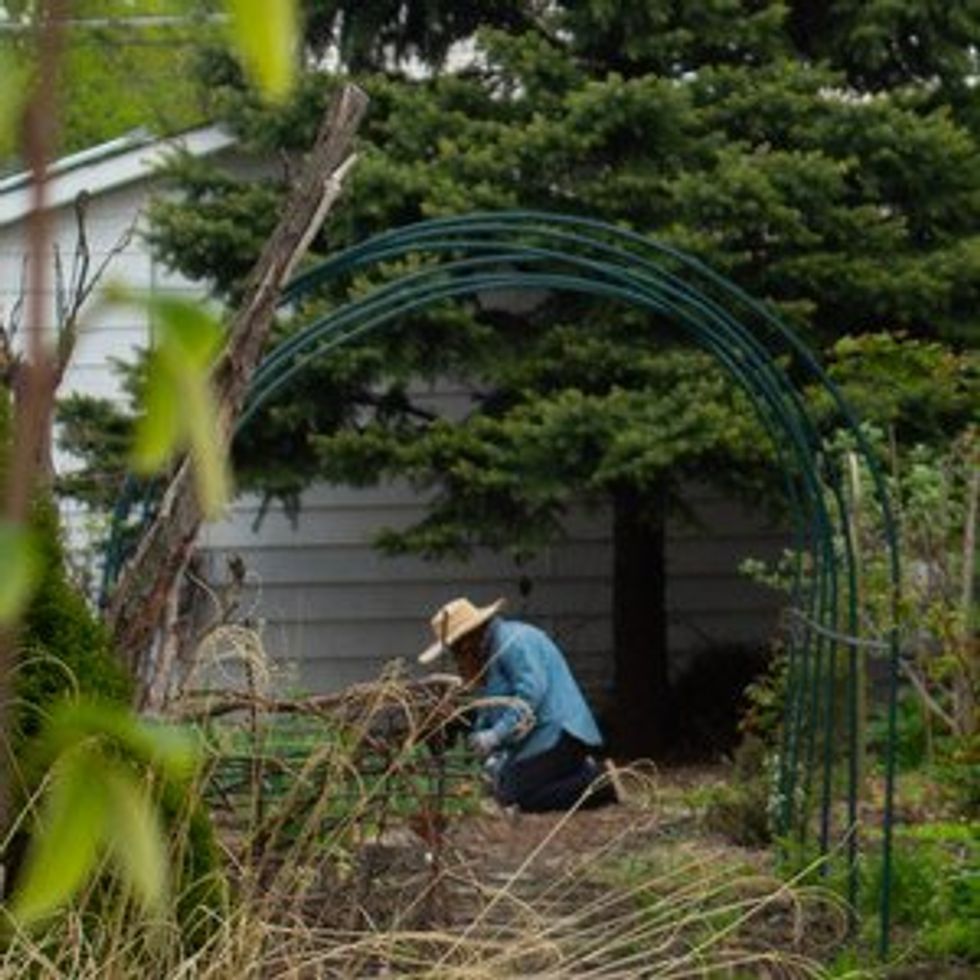 Julia Klee: Working With Spaceopen.spotify.com
Julia Klee: Working With Spaceopen.spotify.com
Affordability is key to successful mitigation plans for urban flooding, especially in areas where green infrastructure is often sacrificed to reduce funding burdens. The Berwyn Tree Canopy Initiative recognizes this and has been encouraging residents to take advantage of Berwyn’s free tree-planting program.
“What we’re trying to do is get the city to plant more trees as part of a flood mitigation strategy,” said McKinley of the BTCI. “They [the city] already have a free tree planting program, but it relies on resident requests, and it’s not advertised terribly well.”
McKinley believes that the City of Berwyn should be more proactive in their native species planting mission, especially where it concerns city-owned land and new construction projects.
In fact, in August 2024, the City of Berwyn and the Township of Berwyn signed an intergovernmental agreement that allocated $75,000 toward the Tree Canopy Restoration Program.
“Should the Program not commence by or before March 31, 2025, the parties (and each of them) shall have the option to immediately terminate this Agreement and withdraw from the Program and this Agreement.”
Robert Schiller clarified that, although the City has yet to receive the $75,000 to begin planting, the agreement remains intact. We reached out to the mayor’s office for comment on numerous occasions, but the only response to date refers [publication] to its flood information page online. Inaction to increase canopy coverage in Berwyn is potentially due to a lack of desire for more trees.
“There is a high percentage of residents in the community that are anti-tree,” said former 6th Ward Alderman Alicia Ruiz.
Schiller attributes some of the anti-tree sentiment to the fear of the large and deep roots that native plants grow. The fear residents maintain, Schiller said, is that these root systems will grow down to the sewer systems looking for a water source, and cause damage to the pipes – an expensive repair.
“Whether they’re on their property, the city’s property, the neighbor’s property, the tree roots will eventually get to those lines. And for those reasons are why some of these people say no, they don’t want a tree in their front yard, in their parkway, any of that.”
These fears are not completely unrealistic. CMAP’s Climate Resilience Program Lead said damage from large root systems happens and is potentially expensive to fix.
“Yeah, there could be some negative tradeoffs. But I think on the whole, trees can reduce flooding to a degree,” said Evasic.
While trees may not prevent major flood disasters such as the one in July 2023, experts agree that their benefits likely outweigh the maintenance costs. Decades-old studies have consistently shown that increasing tree canopy reduces runoff after a storm. A 2014 study conducted in Wilmington, North Carolina, found an 80% reduction in runoff using trees in combination with Silva Cell (a stormwater management deep root system). A similar study in Manchester, UK, found a 58% reduction in runoff during the summer and a 62% reduction in the winter.
The EPA completed 17 studies showing how trees (on a large scale) greatly reduced financial and physical burdens on America’s stormwater systems.
In its report, the EPA cited Minneapolis, Minnesota, as one of its case studies. In 2010, Minneapolis committed to planting 173 trees using a structural cell model, resulting in a 10% reduction in peak flows to the city’s stormwater management system. To this day, Minnesota continues to utilize this model in its construction efforts to support stormwater control and management.
While long-term investments in green-based solutions are largely reliant on local government initiatives, requesting a tree in Berwyn is a small step individuals can take to begin mitigating the risk of floods, especially as the rainy season approaches. This, in tandem with other measures such as disconnecting downspouts and investing in a rain barrel, may hopefully keep Berwyn residents a little safer (and drier) from urban flood and stormwater.
Editor’s Note: This story is made possible through the Berwyn Collaborative: Understanding Community Needs, led by News Ambassadors in collaboration with local news outlets, including Illinois Latino News, click HERE.
Britton Struthers-Lugo is a reporter with the Medill News Service at Northwestern University, a freelance journalist, and a photographer.
The Fulcrum is committed to nurturing the next generation of journalists. To learn about the many NextGen initiatives we are leading, click HERE.
-

 High School Sports2 weeks ago
High School Sports2 weeks agoParents Speak Out As Trans Pitcher Throws Shutout In MN State Quarterfinals
-

 Professional Sports2 weeks ago
Professional Sports2 weeks ago'I asked Anderson privately'… UFC legend retells secret sparring session between Jon Jones …
-

 Health2 weeks ago
Health2 weeks agoOregon track star wages legal battle against trans athlete policy after medal ceremony protest
-

 Professional Sports2 weeks ago
Professional Sports2 weeks agoUFC 316 star storms out of Media Day when asked about bitter feud with Rampage Jackson
-

 NIL3 weeks ago
NIL3 weeks agoNCAA Sends Clear Message About Athlete Pay and Roster Limits
-

 NIL3 weeks ago
NIL3 weeks agoMen's college basketball Top 25 reset
-

 Social Media3 weeks ago
Social Media3 weeks agoControversial Athletics Gender Dispute Goes Viral After Riley Gaines Lashes Over Authorities
-

 Rec Sports3 weeks ago
Rec Sports3 weeks ago2x NBA All-Star Reacts to Viral LeBron James Statement
-

 High School Sports3 weeks ago
High School Sports3 weeks agoIHSA boys track state finals
-

 Motorsports7 days ago
Motorsports7 days agoNASCAR Weekend Preview: Autódromo Hermanos Rodríguez


































